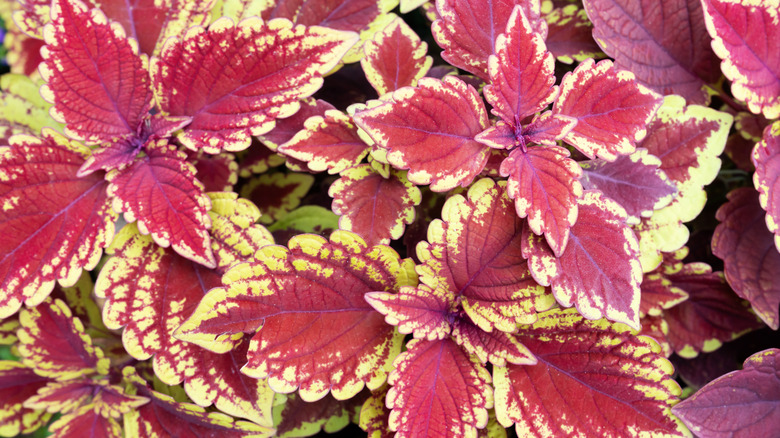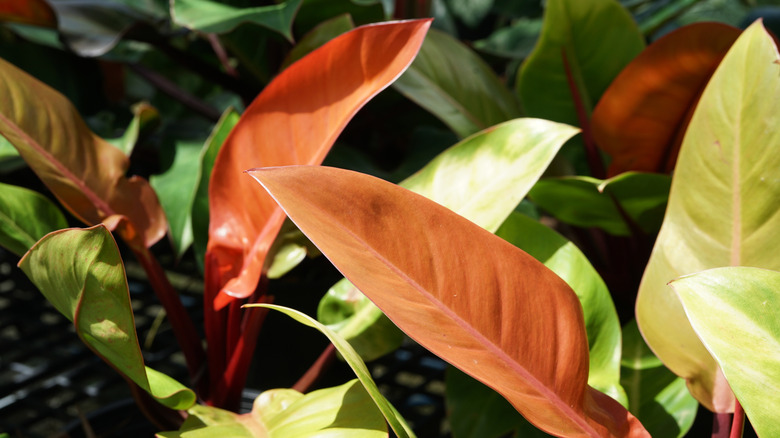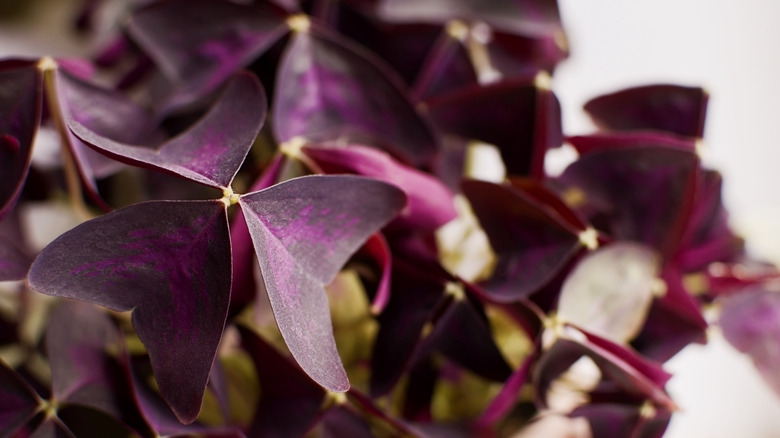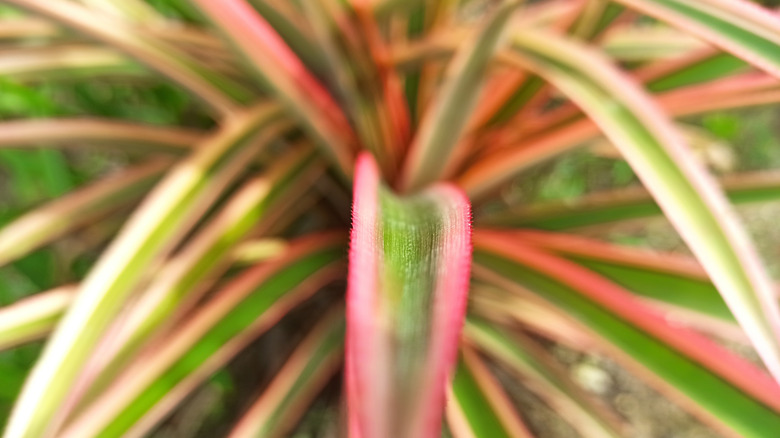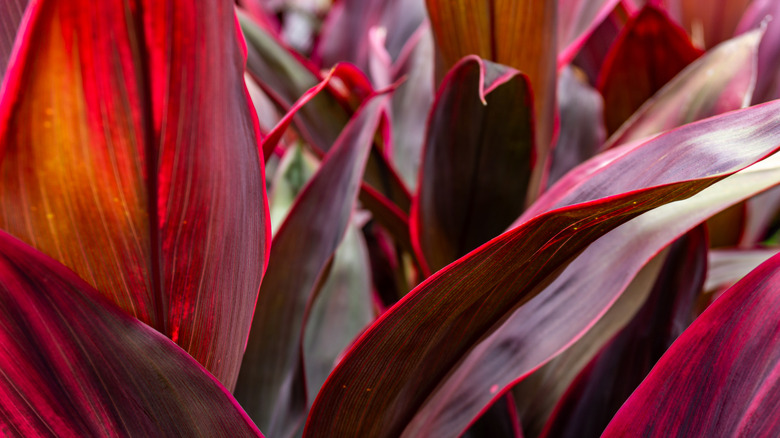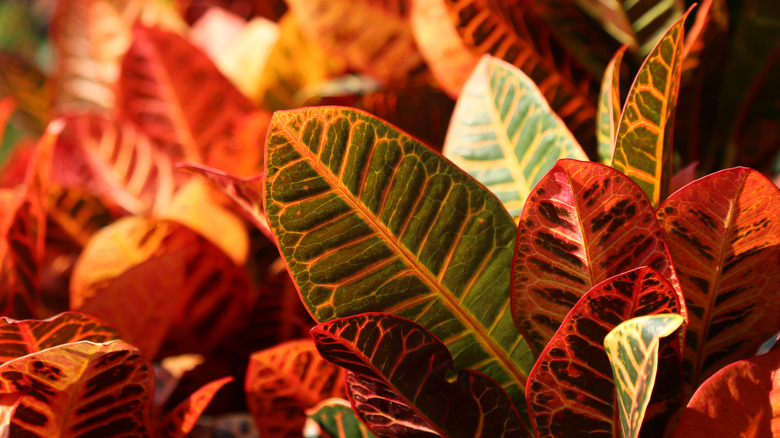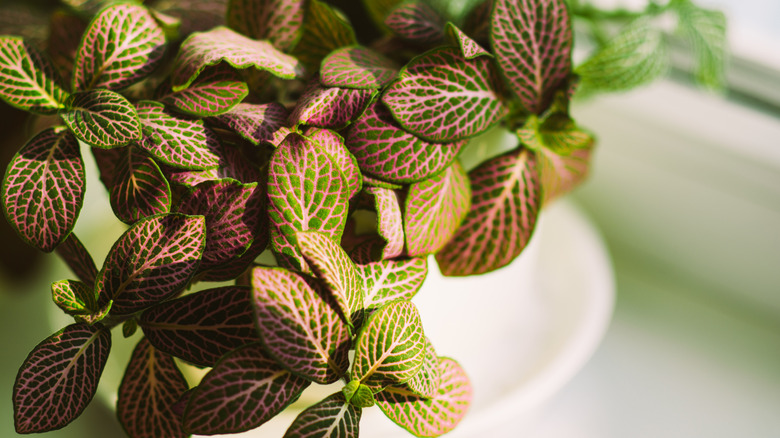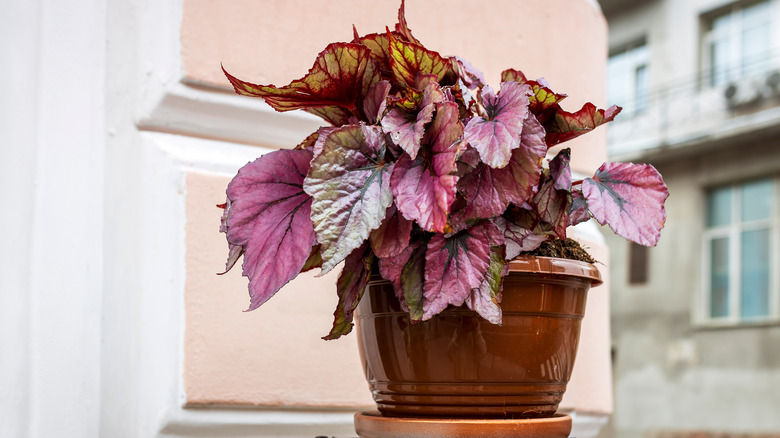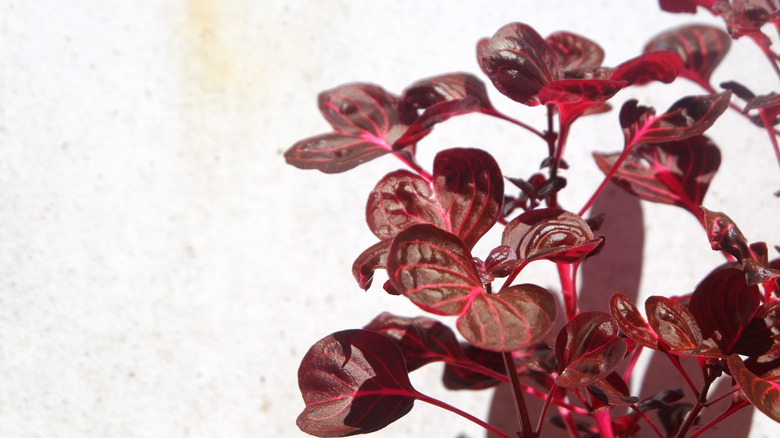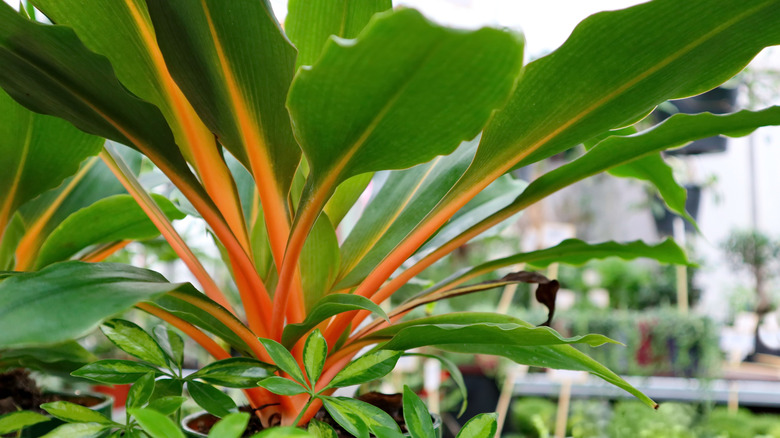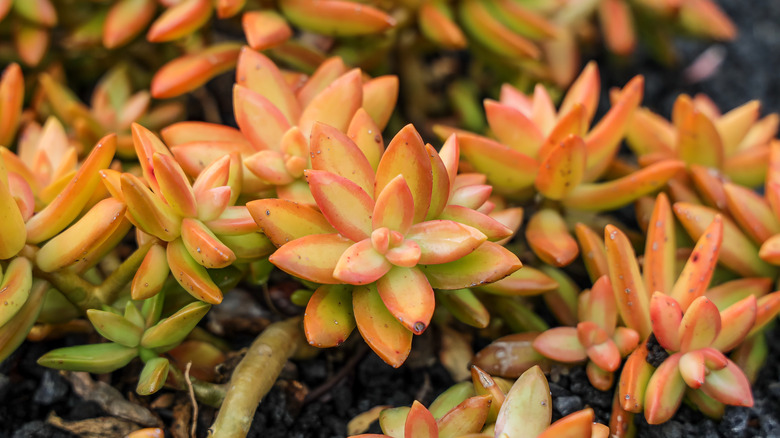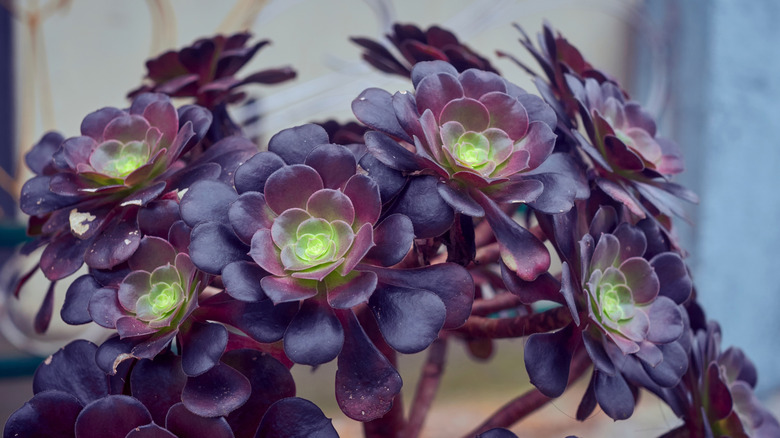Nothing Shows Off Fall Colors Like Growing These Houseplants
Filling your home with houseplants is a great way to add life to your space. Additionally, tending to plants can actually be therapeutic. According to a study conducted by the University of Michigan, they have even been shown to boost brain activity, such as memory and focus. But sometimes houseplants can end up looking a little two-dimensional and bland, particularly if they all feature the same green colors. So, what if there was a way to claim the benefits of houseplants while still bringing eye-catching fall shades into your home?
There are actually plenty of different houseplant varieties that feature a range of autumnal coloring, which can help make your space look cozier and more appealing. From the attractive nerve plant (Fittonia albivenis) with its striking mosaic-like leaves to the rex begonia (Begonia rex-cultorum) with its deep red foliage, you can customize your very own living fall color palette. By following recommended care instructions for sunlight, watering, and soil type, these plants can thrive and grow in your care, thus enhancing their appeal and increasing the amount of unique foliage in your home.
Coleus
Coleus (Plectranthus scutellarioides) is a well-loved plant that comes in a huge range of different colors, from purple to pink and even orange. Choosing a red variety is particularly suited to helping you create an autumnal color scheme, as its attractive rust color perfectly echoes the changing colors of the trees in the fall months. This plant can be grown from seed or purchased from garden centers readily for indoor growing. You can also pinch off longer stems where needed to keep it a manageable size and help it to look thicker.
Philodendron 'Prince of Orange'
Orange is a color largely associated with fall, and did you know you can get this beautiful sunset shade in a houseplant? The Philodendron 'Prince of Orange (Philodendron erubescens 'Prince of Orange) has broad leaves that range from dark green to a bright tangerine shade. Do note that this plant is toxic to both people and pets, so it should be placed out of reach of children, dogs, and cats to prevent ingestion. To encourage more foliage to grow, remove dying or damaged leaves so that the plant can focus its energy on growing new ones.
Purple Shamrock
Perhaps you're looking for darker fall foliage? Well then, purple shamrock (Oxalis triangularis) might be the perfect fit for you. Its deep purple leaves are triangular in shape, which can add an interesting texture to your space. When learning how to care for a shamrock plant, note that it has dormant periods, so you may notice its leaves getting smaller and dropping off. This is a typical occurrence with purple shamrock, and it should recover its foliage after a few months. Every part of this plant is toxic, so it should be kept away from pets and small children.
Dragontree
For a bit more drama, why not opt for a plant that has colorful foliage and impressive height? The dragontree (Dracaena marginata) displays red-edged foliage and can grow over six feet tall indoors. You could also select the 'Tricolor' cultivar, which features an additional yellow streak on its leaves, creating an even more multi-dimensional color palette perfect for the fall. You can always trim your dragontree if it grows too tall for your space. To get a fuller look from the foliage, try pruning back the stems to different heights to improve their coverage and overall appearance.
Cordyline
Want a bit of fall color in your bathroom? The cordyline plant (Cordyline fruticosa), also known as cabbage tree or ti plant, is perfect for bringing an impressive display of autumnal color into your bathroom because it thrives well in humidity. However, keep in mind that plenty of sunlight is needed via a window or a grow light to help your plant thrive. As a general rule, cultivars with darker leaves can tolerate more direct sunlight, whereas the lighter-leaved versions do better in indirect light.
Croton
Believe it or not, you can actually get all the colors of fall in one single, stunning houseplant. Croton (Codiaeum variegatum) is a well-loved option that stands out for its veined leaves, which can display dark green, rusty orange, red, and even yellow or pink colors. You can add fertilizer to your croton's soil, like this liquid fertilizer for tropical plants, to help it thrive. Make sure to add it according to package instructions to help it grow strong, eye-catching foliage. However, fertilizing is not required as often during the winter months when it enters a period of rest.
Nerve plant
If you like the veined look of the croton, but need something a bit smaller, look no further than the nerve plant (Fittonia albivenis), which grows to just a foot tall and roughly half a foot wide. Its dark green leaves are shot through with red, pink, or white stripes. An additional benefit of this 'mosaic plant' is that it is not toxic, meaning it can be placed in any part of the house without the fear of children or animals getting sick from it..
Rex begonia
Many fall color schemes involve some kind of burnt red or orange color, great for creating an atmospheric setting. Rex begonia (Begonia rex-cultorum) is a perfect way to get this with its dark green-edged leaves featuring bright red or pink patches in the center. They require a lot of light and humidity. It is therefore a good idea to grow this easy-to-care-for plant in your bathroom, where the high level of moisture in the air will keep it happy. In addition, they prefer porous soil that allows plenty of air circulation to avoid heavy soil sitting on the roots.
Bloodleaf
Blood leaf (Iresine herbstii) is a wonderful houseplant option if you're looking for something that has color all over. From its blood-red leaves to its ruby-colored stems, this fascinating plant is a burst of autumnal red. To get bloodleaf looking its best, make sure it receives full sun, as this causes the foliage to develop brighter colors. Keeping it out of excess shade will help prevent it from growing too long and spindly. However, if your plant does grow long, leggy stems, these can be easily removed and can actually be grown in water to produce whole new plants.
Fire flash
Colorful vegetation comes in all forms, and the fire flash plant (Chlorophytum orchidastrum) is a wonderful example of how you can bring fall shades into your home in unique ways. Its simple, lime green leaves are beautifully offset by thick, brightly-colored orange stems. Part of the spider plant family, this houseplant is relatively low-maintenance. It is drought-tolerant, meaning it doesn't need much watering, particularly during the winter months.
Coppertone Stonecrop
Are you tempted by the low-maintenance reputation of succulents, but have been less than enthused by their muted, grey-green colors? Well, Coppertone stonecrop (Sedum nussbaumerianum) might be the perfect solution. This small shrub features arrow-shaped leaves edged in an attractive fall orange color that can create an impressive sunset effect in your home. They are relatively low-maintenance and do well on their own in containers or with other plants that have similar needs. This plant tends to grow horizontally, so if your stonecrop is getting too leggy, the stems can simply be pinched off to the desired length.
Aeonium
The blooming of chrysanthemums (Chrysanthemum morifolium) is a welcome sight for those who look forward to the coming autumn. But what if there was a way to get the beautiful shape and color of a mum in the form of an easy-to-care-for succulent? Aeoniums are the perfect way to bring fall color into your home without worrying about complicated growing instructions. There are 36 species of Aeonium, which come in a range of colors, including green and pink, but possibly their most striking is the dark purple shade that is perfect for a fall aesthetic.

